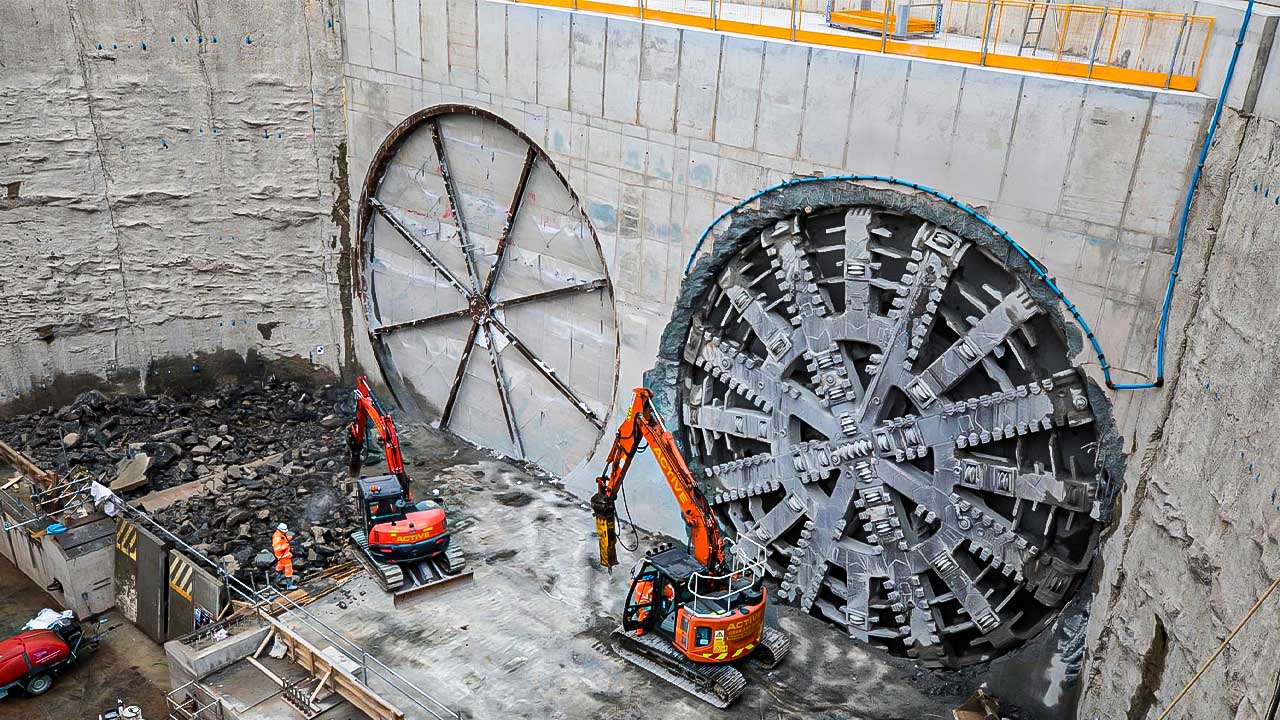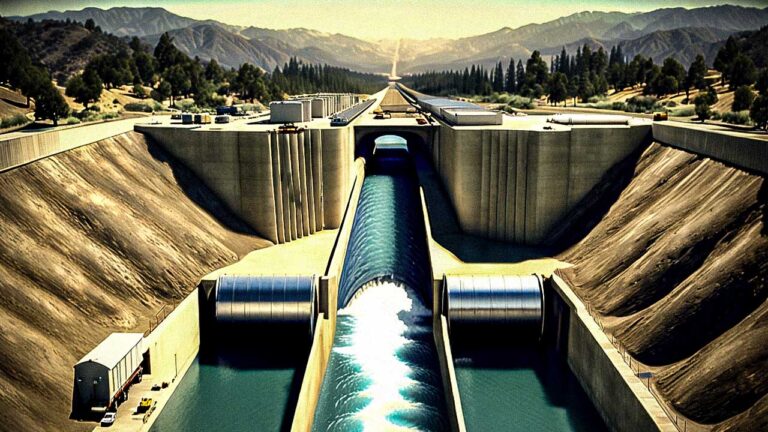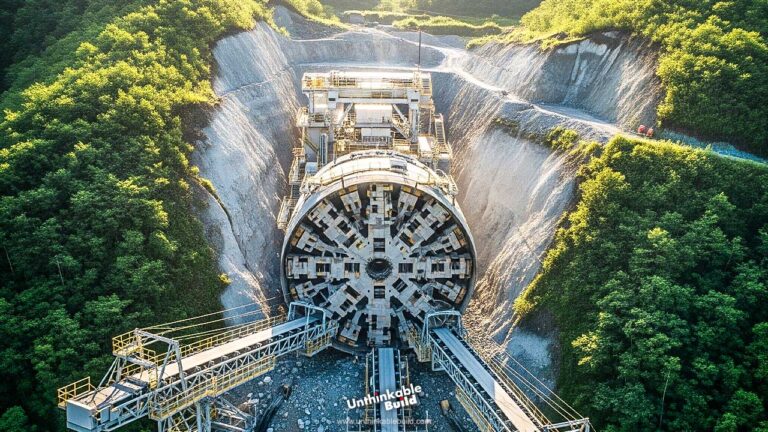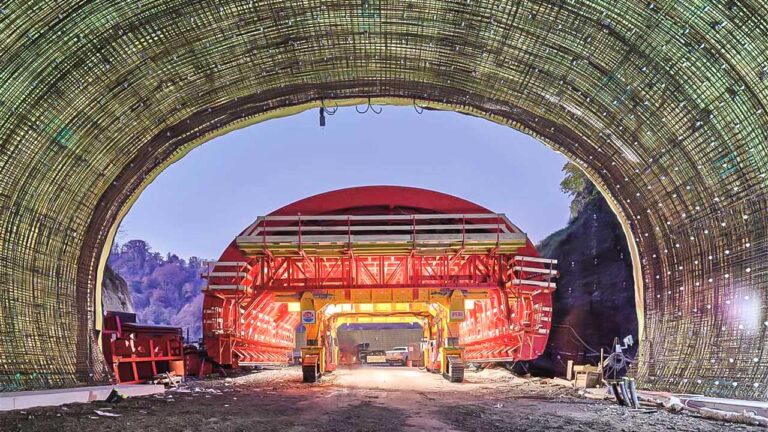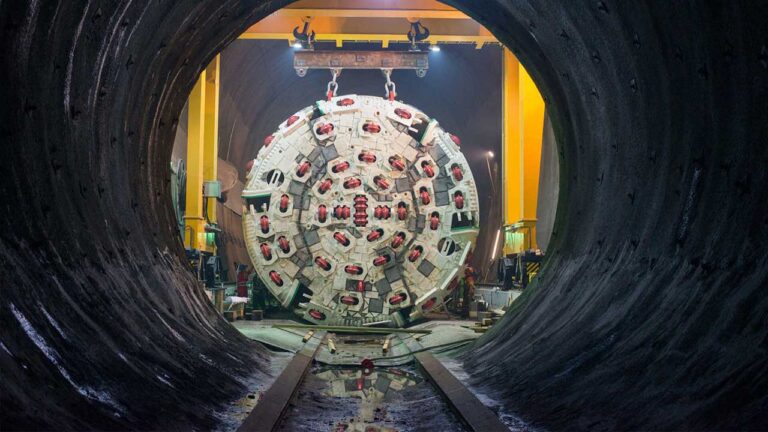Silvertown Tunnel: London’s $2.8 Billion Controversial Megaproject
In the heart of London, where the city’s pulse beats strongest, the streets become a canvas for a daily drama of wheels and woes. Picture ancient cobblestones now etched with the tire tracks of modernity, where the symphony of car horns and engine roars sets the rhythm of urban life.
Here, among the historic facades that whisper tales of kings and conquerors, a different kind of battle unfolds—a struggle for inches, for seconds, for the fleeting freedom of movement. Each vehicle becomes a character, each driver a protagonist in their own quest for progress.
Above, the iconic red buses soar through the skyline like crimson kites, while below, the river Thames flows serenely, indifferent to the chaos it witnesses daily. And in between, the streets buzz with a motley crew of taxis, cyclists, and pedestrians, each adding their own note to the city’s symphony of motion.
The traffic conditions on both sides of the River Thames in London paint a vivid portrait of the city’s perpetual hustle and bustle. With numerous bridges spanning its iconic waters, including the historic Tower Bridge, the modern Millennium Bridge and Blackwall Tunnel, these crossings serve as vital conduits for commuters and travelers alike. However, the increasing volume of vehicles navigating these passages has led to frequent congestion and delays, particularly during peak hours.
The Blackwall Tunnel, an engineering marvel beneath the mighty River Thames, stands as a vital artery in London’s transportation network. Connecting the bustling districts of Greenwich in the south to Tower Hamlets in the north, this twin-bore tunnel serves as a lifeline for thousands of commuters daily. Its construction, dating back to the early 20th century, heralded a new era of connectivity, enabling seamless travel between the city’s vibrant boroughs. Despite its historic significance, the tunnel’s narrow design grapples with the challenges of modern traffic demands, often experiencing congestion during peak hours.
As a solution to alleviate this strain on the city’s infrastructure and improve the flow of traffic, plans are underway for the construction of a new tunnel beneath the River Thames. This ambitious project aims to provide an alternative route for vehicles, easing the burden on existing bridges and enhancing connectivity across London. By offering a more efficient pathway for commuters and freight alike, the new tunnel promises to usher in a new era of mobility while preserving the vitality of the city’s historic waterway.
Also Read: Grand Paris Express: Europe’s Largest Metro Network
The upcoming 1.4km dual-bore road tunnel beneath the Thames represents a groundbreaking addition to London’s infrastructure, marking the city’s first such tunnel in over three decades. By integrating modern tunneling technology with a user fee system and enhancements to cross-river public transportation, this project aims to bolster the reliability and robustness of the broader road network.
London has long held its public transportation system in high esteem, striving diligently to steer residents away from car dependency. Yet, when faced with no alternative but to hit the road, particularly when navigating the eastern river crossings, relying solely on the Tube falls short. Thus, the proposal for the Silvertown Tunnel project emerged as a potential solution to this pressing urban challenge.
The twin-bore Silvertown Tunnel, a significant infrastructure endeavor, is currently underway to combat congestion and enhance traffic efficiency within the area. Spanning approximately 1.4 kilometers beneath the iconic River Thames, this tunnel links the Greenwich Peninsula, situated in the borough of Newham, with Silvertown. Its primary goal is to alleviate the chronic congestion plaguing the existing Blackwall Tunnel while simultaneously enhancing cross-river bus connectivity. Construction on the project commenced in 2021, with an anticipated completion date set for 2025.
The Silvertown Tunnel project will feature two parallel tunnels spanning approximately one kilometer each, with two lanes of traffic in each direction. These lanes will be specifically designed to accommodate larger vehicles, including iconic double-decker buses and heavy goods trucks. While pedestrian and cyclist access will not be permitted within the tunnels themselves, the surrounding landscape design will incorporate walking routes, new buildings housing operational facilities, and footbridges at both tunnel entrances.
The total expenditure for this ambitious venture is estimated to reach around $1.27 billion, with additional annual payments of $1.52 billion over the subsequent 25 years under a private finance initiative contract.
Meet “Jill,” the 82-meter-long, 1,800 tons and 11.9-meter-diameter Tunnel Boring Machine that’s shaking up the UK’s tunneling scene. Named in tribute to London’s trailblazing first female bus driver Jill Viner, this colossal TBM is rewriting the rules as it carves its way through the city’s underground. With a diameter that dwarfs its predecessors, Jill is leading the charge from Newham to Greenwich, chomping through layers of alluvium, London clay, and Lambeth at a steady pace of about 10 meters per day. But Jill’s not just powerful – she’s also environmentally conscious.
To keep carbon emissions in check, the project team is getting creative. They’re harnessing the river to ferry construction materials, reducing the need for noisy trucks clogging up local roads. Plus, every piece of machinery on-site meets the Mayor’s strict low emission standards, ensuring that progress comes with a clean conscience.
Ordinarily, twin-bore tunnels necessitate a complex interplay of multiple tunnel boring machines or costly disassembly and relocation. However, the brilliant minds behind this project opted for a different approach, a truly groundbreaking maneuver. They rotated the massive 11.9-meter-diameter boring machine a full 180 degrees, paving the way for an unprecedented return journey. Imagine this: a colossal spin, an exhibition of engineering bravado never before seen on this scale.
Also Read: Thames Tideway Tunnel: London’s £4.5 Billion “Super Sewer” Tunnel
To accomplish this feat, engineers devised a cavernous chamber, meticulously preparing the stage for this audacious reversal. Piece by piece, the mighty TBM was delicately positioned upon Nitrogen skates – hydraulic marvels meticulously crafted for this very purpose. And then, with a stroke of innovation, the TBM rotated gracefully, pivoting effortlessly. With each rotation, it defied expectations, heralding the dawn of a triumphant return journey.
The twin-bore Silvertown Tunnel, despite its projected advantages, has stirred considerable controversy, largely stemming from apprehensions about its environmental repercussions. Indeed, not everyone is in favor of the Silvertown Tunnel’s construction.
Controversies surrounding the Silvertown Tunnel project in London have largely revolved around several key issues. Firstly, there’s the exemption of the tunnel from the London Congestion Charge, which critics argue could encourage more drivers to use the tunnel, potentially leading to heightened congestion and pollution in the area.
Additionally, debates have centered on the toll charges for using the tunnel, with concerns raised about the potential disproportionate impact on lower-income residents who rely on driving.
Charging is slated to commence upon the opening of the tunnel in 2025, coinciding with the implementation of tolling at the nearby Blackwall Tunnel. Initially, charges were anticipated to mirror those of the Dartford Crossing, which as of June 2023, stand at £2.00 to £2.50 for cars depending on the payment method. Signs proposed by Traffic for London in 2015, awaiting approval, suggested prices for tunnel usage between 6 am and 10 pm would be £4.00 for cars, £3.50 for motorcycles, and £8.50 for other vehicles on a single journey. These charges are expected to be finalized in 2024, with the system ready for driver registration. Considering inflation, the proposed £4.00 charge for cars may translate to approximately £5.25 in 2025. While discounts for residents in Greenwich, Newham, and Tower Hamlets were initially rejected in 2015, in October 2023, the Mayor of London proposed a discount for low-income residents.
Environmental groups have expressed worries about the tunnel’s environmental impact, particularly regarding increased traffic and air pollution. Questions have also been raised about the project’s financial viability and the possibility of escalating costs. Finally, there’s ongoing debate about whether the focus should be on investing in public transportation infrastructure and alternative modes of transport rather than building new road infrastructure. These controversies underscore broader discussions about urban transportation planning, environmental sustainability, and equity in infrastructure development.
Nevertheless, despite the ongoing debate and dissent, the project continues to progress forward. Its impending impact remains a subject of fervent discussion and disagreement among stakeholders. In essence, the twin-bore Silvertown Tunnel represents both a remarkable engineering achievement and a contentious issue. As its anticipated opening approaches in 2025, it promises to alter the landscape of transportation in London significantly, yet the divergent opinions surrounding it persist, shaping the ongoing discourse.

